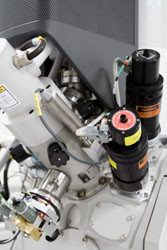Increasing the impact of ion facilities
Eleven leading ion beam facilities came together to enhance user access and the quality of research carried out. With EU funding of the project 'Support of public and industrial research using ion beam technology' (SPIRIT)(opens in new window), partners collaborated within the consortium and without through its joint research activities (JRAs) and TNA projects. To get into the networking spirit, a website was launched showcasing complete information on the project. Brochures, flyers and SPIRIT newsletters including a special brochure for biomedical applications and three flyers for specific industrial applications of ion technologies were widely distributed. Workshops, tutorials and a technician exchange programme enabled presentation of information and hands-on training. Getting technologies to industry was an important focus. Three regional industrial days were organised and about 30 % of beam time was used by SPIRIT beneficiaries strongly involved in industrial research and development and services. By the end, spin-off companies had been founded at three of the infrastructures. The partners are specialised in highly complementary areas. TNA activities modified and analysed surfaces, interfaces, thin films and nano-structured systems important to materials science, biomedicine, and environmental research and technology. Other fields included nuclear physics and astrophysics, forensics and cultural heritage. JRAs led to a number of infrastructure updates and novel experiments. New beam lines and end stations as well as innovative detectors with increased detection efficiency, radiation hardness and spatial resolution were constructed and/or developed. Ion beam based-imaging, analysis and molecular mapping were demonstrated with variations on photon-induced X-ray emission spectroscopy. All told, SPIRIT activities have resulted in more than 100 publications in peer-reviewed journals of esteem. Thanks to the implementation of a focused gender plan, about half of all personnel hired by SPIRIT are women as were about a third of principal investigators on TNA proposals. SPIRIT created the first European multinational consortium for the transnational use of ion technologies in public and industrial research and development. It has achieved greater access to facilities and higher quality research through shared expertise and infrastructure updates. Industrial and public sector cooperation in numerous emerging fields can truly enable a win-win game plan.







